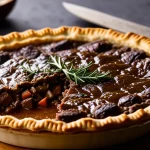Essential Ingredients for Welsh Rarebit
Understanding the Welsh rarebit ingredients is crucial to achieving that distinctive, rich taste. At its core, a traditional Welsh rarebit requires sharp cheddar cheese, mustard, Worcestershire sauce, ale or beer, butter, and bread. Cheddar is the star, contributing a sharp, tangy depth. For an authentic touch, many cooks prefer a mature or extra mature variety. This sharp cheddar should be creamy enough to melt smoothly but retain a bold flavor.
When selecting ale, choose a flavorful but not overpowering beer—something like a British pale ale works well. Ale adds complexity and slight bitterness, complementing the cheese perfectly.
Additional reading : How can you make a traditional Bakewell tart at home?
Some recommend having English mustard powder for a subtle heat. Worcestershire sauce adds savory, umami notes that transform the dish from simple cheese on toast to a gourmet treat.
If sourcing cheese is a challenge, look for quality substitutes with similar sharpness but avoid processed options. Likewise, if ale is unavailable, a light beer or even a robust non-alcoholic malt can substitute without losing the essence of traditional Welsh rarebit. Buying from local artisans or specialist suppliers often yields the best cheese and ale.
In parallel : What are the steps to crafting a traditional steak and kidney pie?
Step-by-Step Preparation Guide
Master the art of preparing a classic Welsh rarebit with confidence.
Preparing the cheese sauce
Start by choosing a sharp, flavorful cheese as the foundation for your Welsh rarebit recipe. Traditionally, Cheddar works best due to its rich taste and excellent melting properties. Melt butter in a saucepan over low heat, then whisk in flour to create a smooth roux. Gradually add beer or milk while stirring to avoid lumps. Slowly incorporate grated cheese, stirring until the sauce becomes thick and velvety. Enhance the flavor with mustard, Worcestershire sauce, and a pinch of cayenne pepper. The key to preparing Welsh rarebit lies in balancing these ingredients to create a creamy, tangy cheese sauce perfect for topping.
Toasting the bread
Choose sturdy bread slices that can support the rich cheese sauce without sogginess. Toast the bread lightly to give it a golden, crisp base. This ensures your homemade Welsh rarebit maintains texture and contrast between the creamy topping and crunchy bread.
Assembling and grilling the rarebit
Ladle the warm cheese sauce generously over the toasted bread. Place the assembled slices on a baking tray under a grill, watching carefully until the cheese bubbles and turns golden brown. This final step seals the flavors and delivers the iconic look and taste of Welsh rarebit.
Tips for the Best Flavor and Texture
Mastering Welsh rarebit cooking tips begins with balancing rich flavors—mustard, Worcestershire sauce, and ale are key ingredients that elevate the dish. Use mustard sparingly to add a subtle tang without overpowering the cheese, while Worcestershire sauce enhances depth with its umami notes. Ale adds a mild bitterness that cuts through the creaminess, creating a harmonious taste.
When striving for a creamy sauce, melt your cheese gently over low heat to prevent separation. Stir consistently to blend the ale and sauces evenly, ensuring a smooth texture. Avoid overheating, which can cause the mixture to become grainy.
For optimal grilling, aim for an even, golden-brown finish. Position the grill about 4-6 inches from the heat source, and watch closely to prevent burning. Rotate the rarebit halfway through grilling for a consistent crust. The perfect crust adds texture without drying out the luscious sauce beneath.
Common mistakes include overheating the cheese, using too much mustard, or neglecting to stir, resulting in uneven flavor or texture. Paying attention to these nuances guarantees a memorable Welsh rarebit experience.
Variations and Serving Suggestions
Welsh rarebit is a versatile dish, lending itself easily to customization ideas that suit various tastes. Beyond the classic cheese and mustard base, some popular Welsh rarebit variations include adding smoky bacon, sautéed mushrooms, or even a dash of ale for richness. Each twist enhances the traditional flavor while keeping the essence intact.
When it comes to serving Welsh rarebit, presentation and accompaniments play a crucial role. Common garnishes like chopped chives or a sprinkle of paprika add color and a subtle flavor boost. For a more indulgent option, pair the rarebit with a side of tangy pickles or a fresh green salad, balancing richness with acidity.
Different occasions call for tailored serving styles. For a cozy brunch, serve Welsh rarebit on toasted rustic bread with a soft-boiled egg. At gatherings, cut into bite-sized portions for elegant finger food. These ideas make Welsh rarebit adaptable, appealing to both casual meals and special events.
Exploring these variations and serving options allows you to experience the dish’s full potential, making every meal a delightful culinary adventure.
Brief History and Cultural Importance
Exploring the roots and cultural role of a beloved dish
Welsh rarebit history traces back to the early 18th century in Welsh cuisine, originally a humble cheese-based dish designed to make stale bread appetizing. Its origins are distinctly Welsh, with recipes evolving from simple melted cheese on toast to more complex blends incorporating beer, mustard, and Worcestershire sauce. This evolution demonstrates the dish’s adaptability and enduring appeal.
Throughout UK food culture, Welsh rarebit has maintained a cherished status as comfort food. It symbolizes traditional Welsh hospitality and showcases local ingredients like sharp Cheddar cheese. Its name notably reflects cultural identity rather than ingredients; the term “rabbit” is a playful nod rather than a component, emphasizing its uniqueness.
In the broader context, Welsh rarebit represents more than just a snack—it connects culinary history with modern tastes, illustrating how classic recipes thrive when adapted thoughtfully. Appreciating Welsh rarebit’s origins and cultural significance offers insight into both Welsh cuisine and the evolving landscape of British gastronomy.






